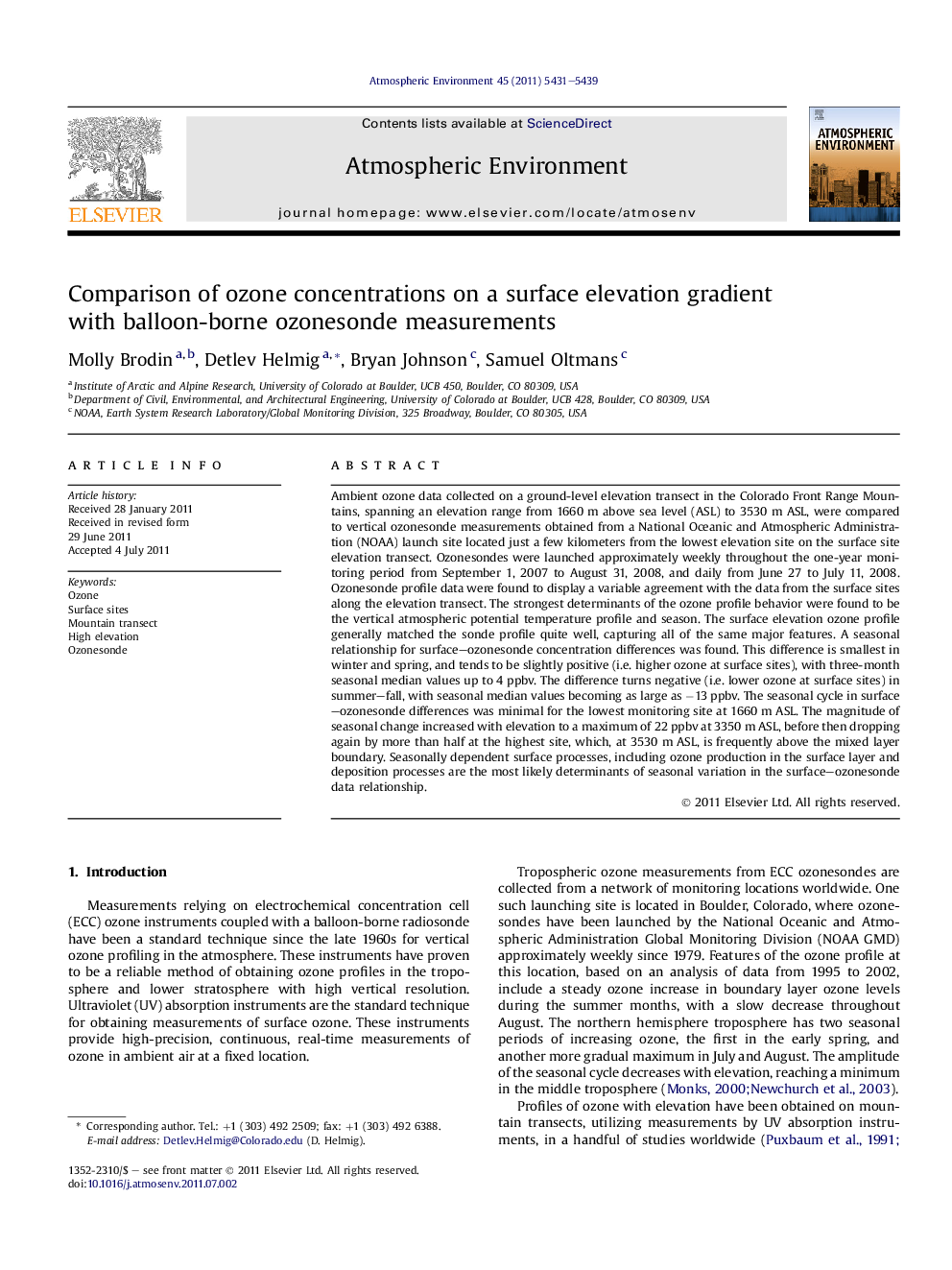| Article ID | Journal | Published Year | Pages | File Type |
|---|---|---|---|---|
| 4439626 | Atmospheric Environment | 2011 | 9 Pages |
Ambient ozone data collected on a ground-level elevation transect in the Colorado Front Range Mountains, spanning an elevation range from 1660 m above sea level (ASL) to 3530 m ASL, were compared to vertical ozonesonde measurements obtained from a National Oceanic and Atmospheric Administration (NOAA) launch site located just a few kilometers from the lowest elevation site on the surface site elevation transect. Ozonesondes were launched approximately weekly throughout the one-year monitoring period from September 1, 2007 to August 31, 2008, and daily from June 27 to July 11, 2008. Ozonesonde profile data were found to display a variable agreement with the data from the surface sites along the elevation transect. The strongest determinants of the ozone profile behavior were found to be the vertical atmospheric potential temperature profile and season. The surface elevation ozone profile generally matched the sonde profile quite well, capturing all of the same major features. A seasonal relationship for surface–ozonesonde concentration differences was found. This difference is smallest in winter and spring, and tends to be slightly positive (i.e. higher ozone at surface sites), with three-month seasonal median values up to 4 ppbv. The difference turns negative (i.e. lower ozone at surface sites) in summer–fall, with seasonal median values becoming as large as −13 ppbv. The seasonal cycle in surface–ozonesonde differences was minimal for the lowest monitoring site at 1660 m ASL. The magnitude of seasonal change increased with elevation to a maximum of 22 ppbv at 3350 m ASL, before then dropping again by more than half at the highest site, which, at 3530 m ASL, is frequently above the mixed layer boundary. Seasonally dependent surface processes, including ozone production in the surface layer and deposition processes are the most likely determinants of seasonal variation in the surface–ozonesonde data relationship.
► One year of surface and balloon-borne ozone measurements along a ∼2000 m elevation transect in the Colorado Rocky Mountains. ► There generally was good agreement in the two data sets. ► Deviations between the two data sets show a seasonal and altitude dependence.
